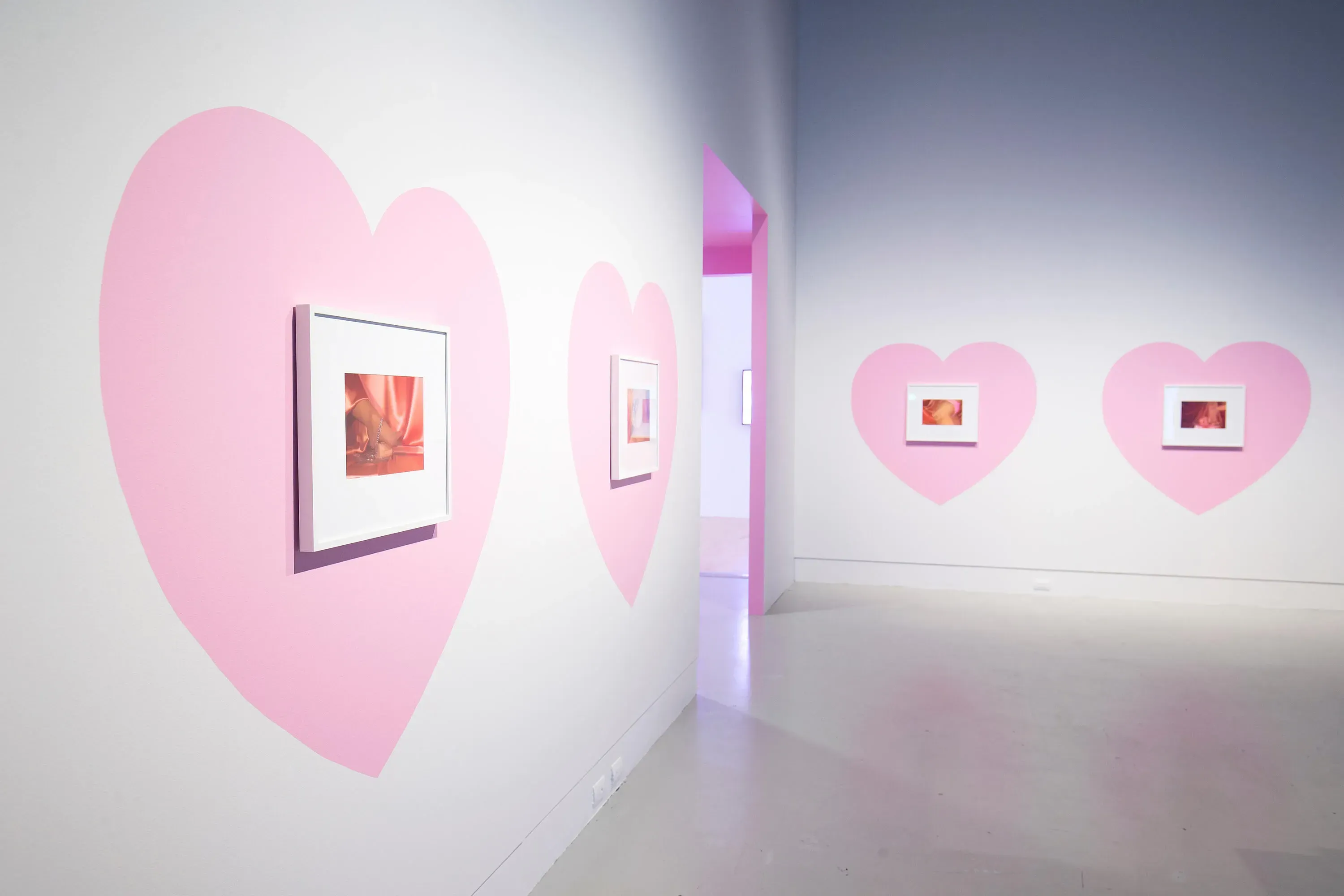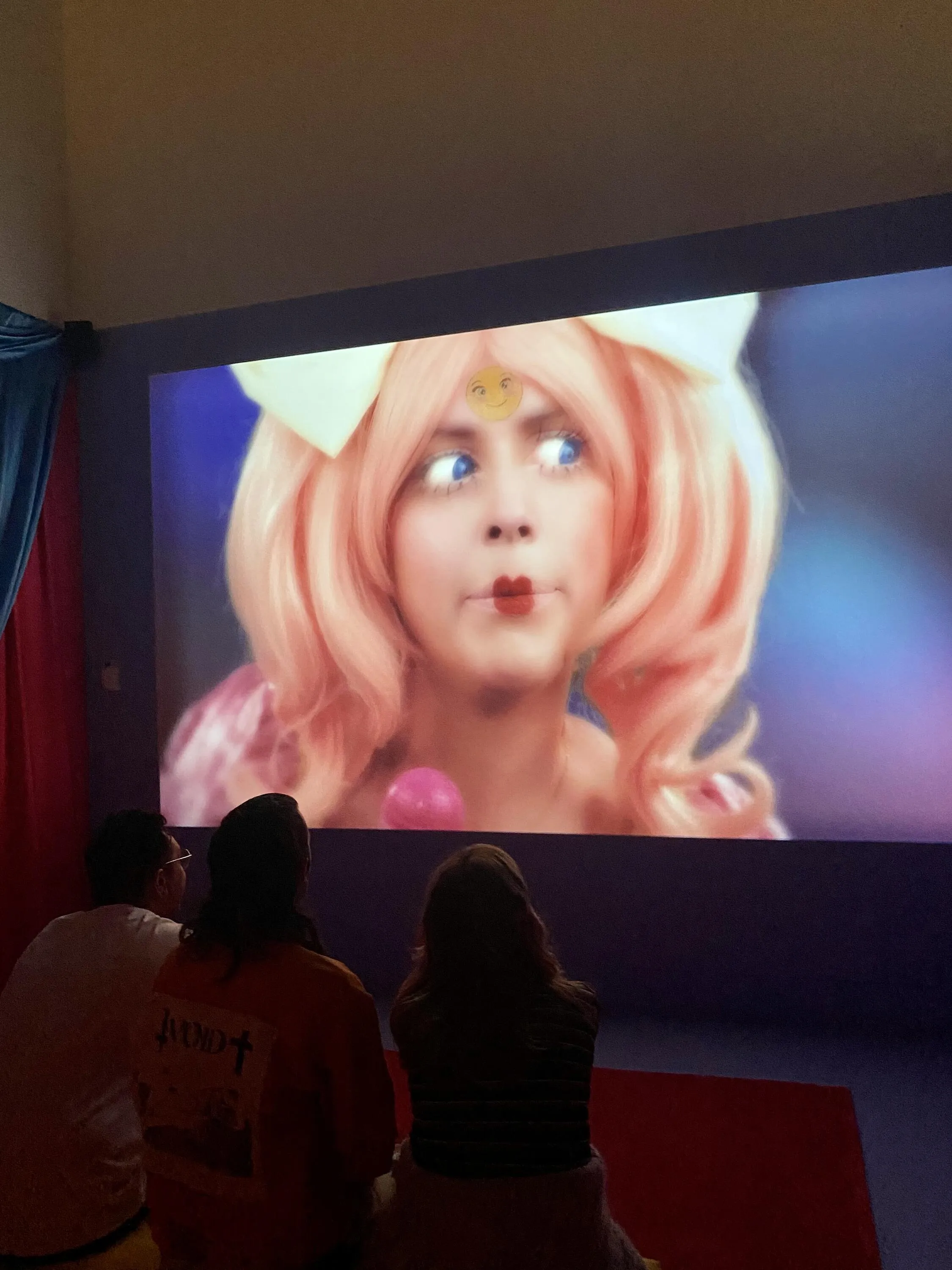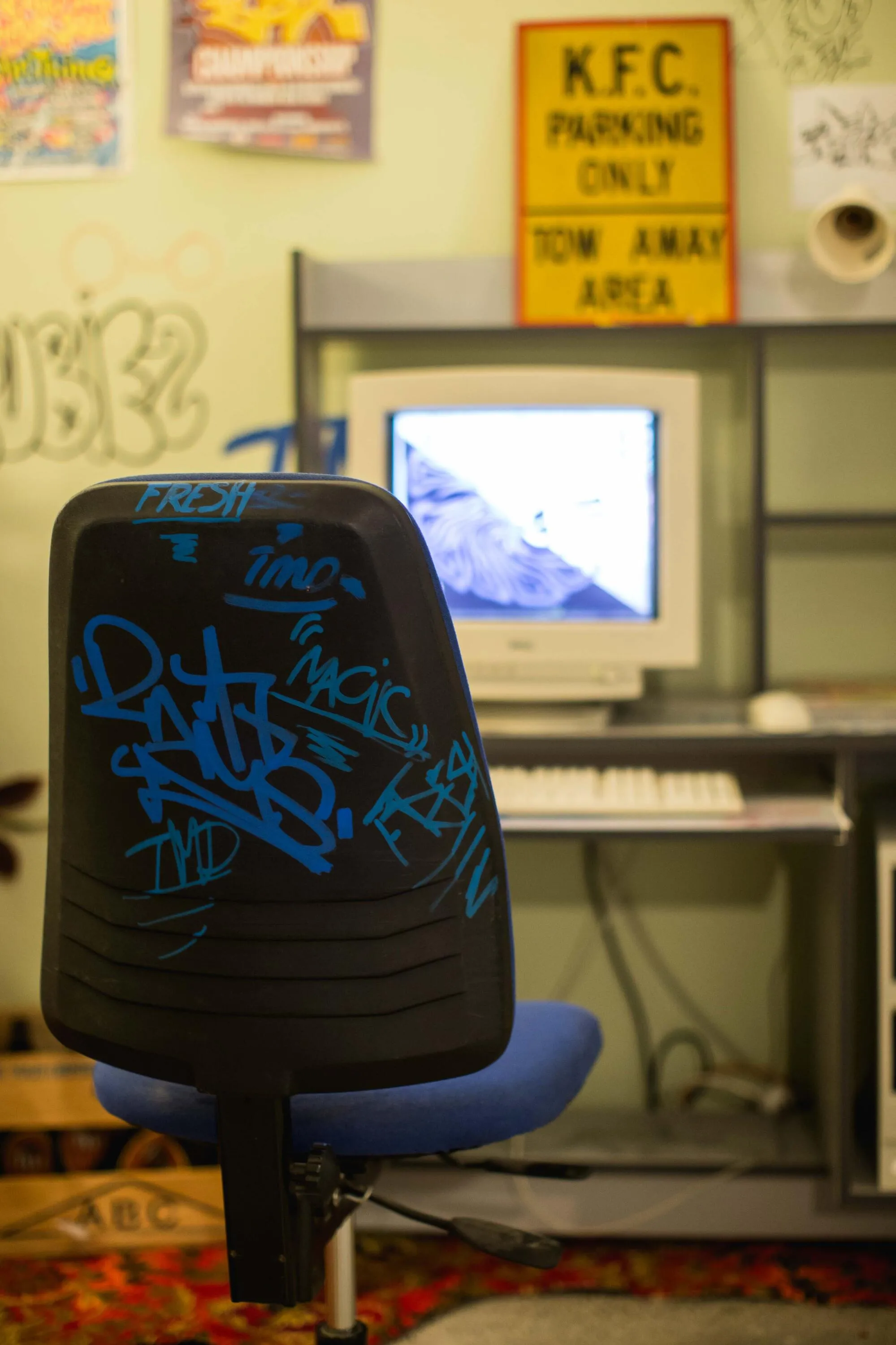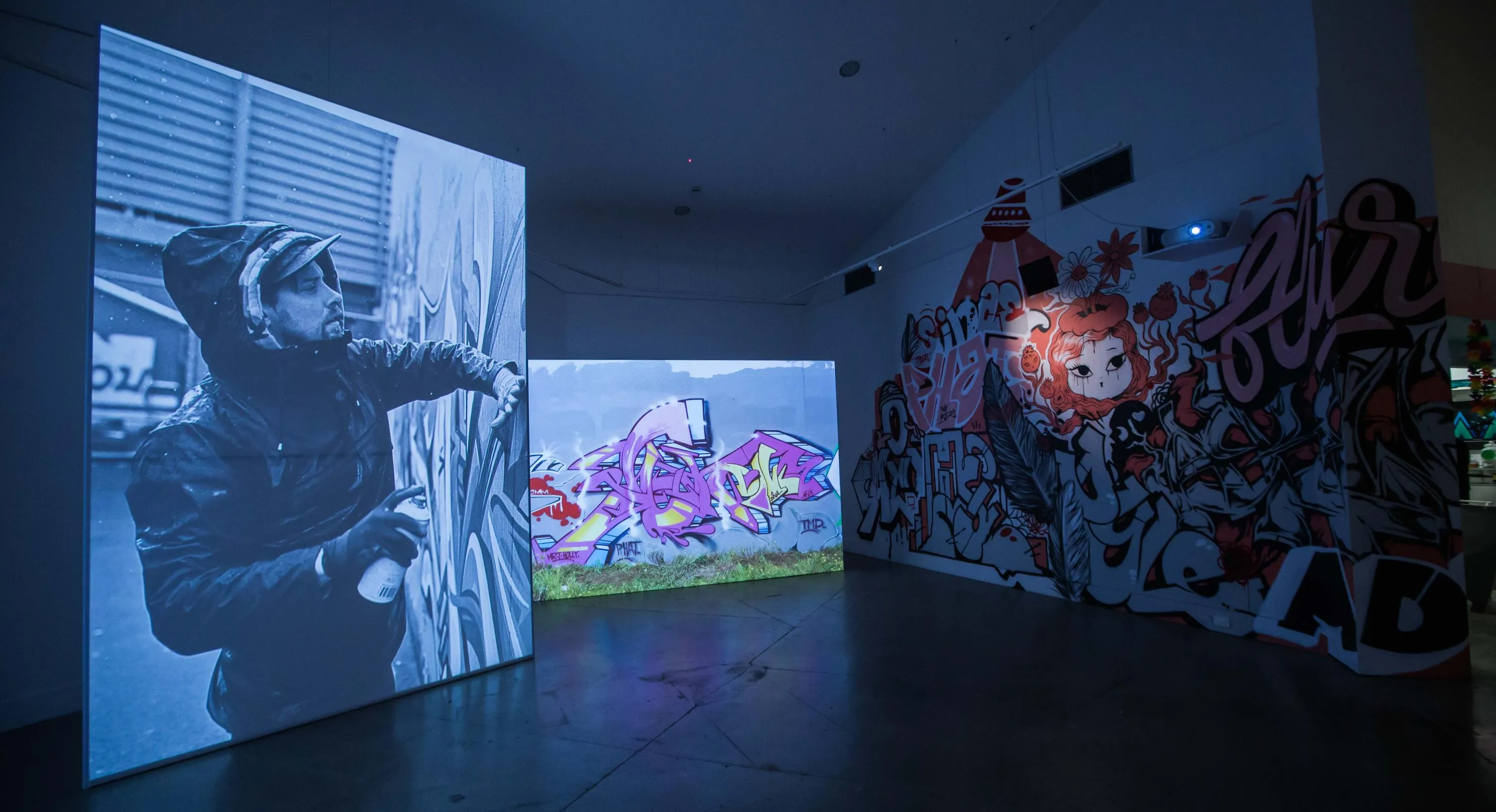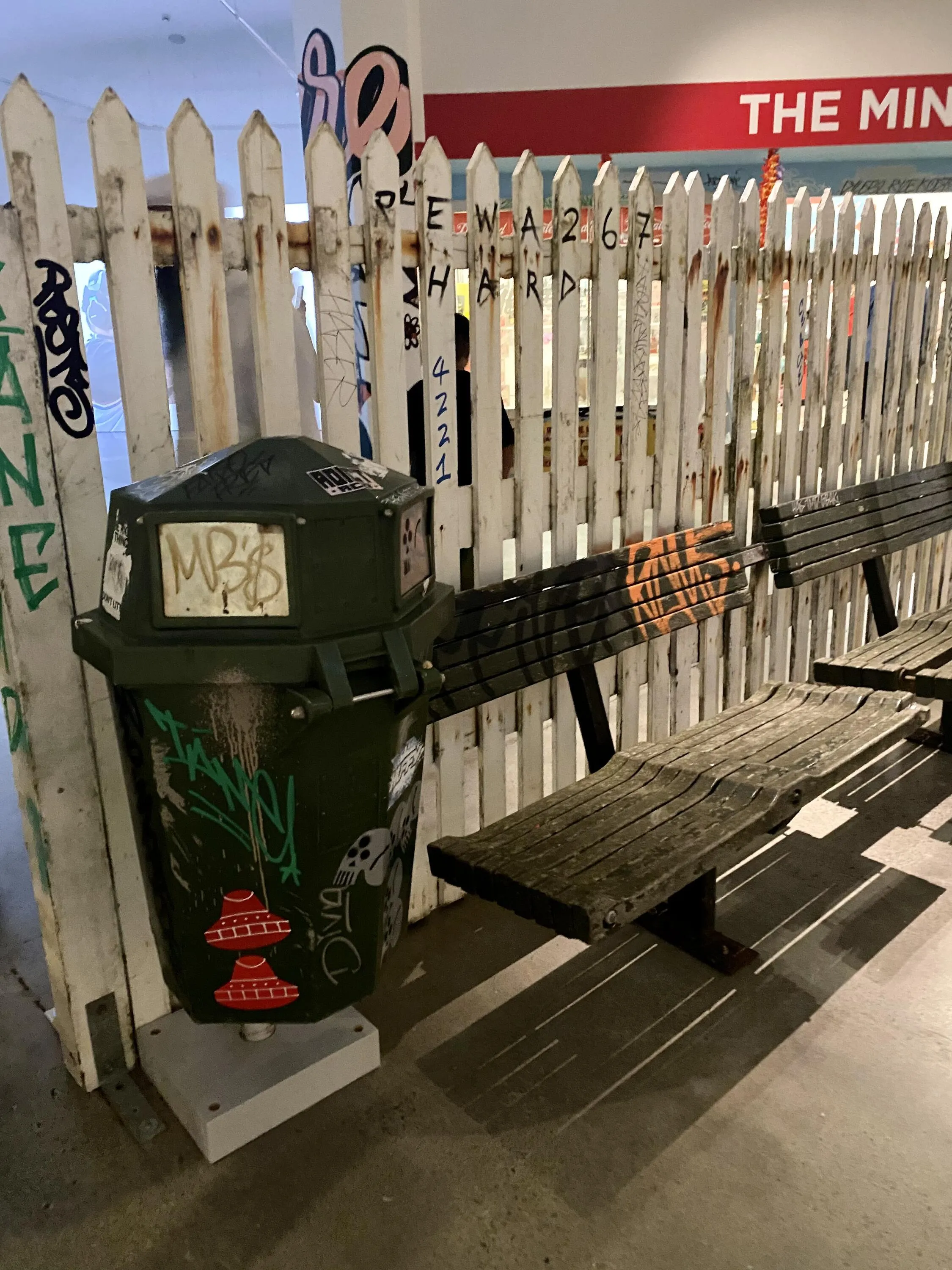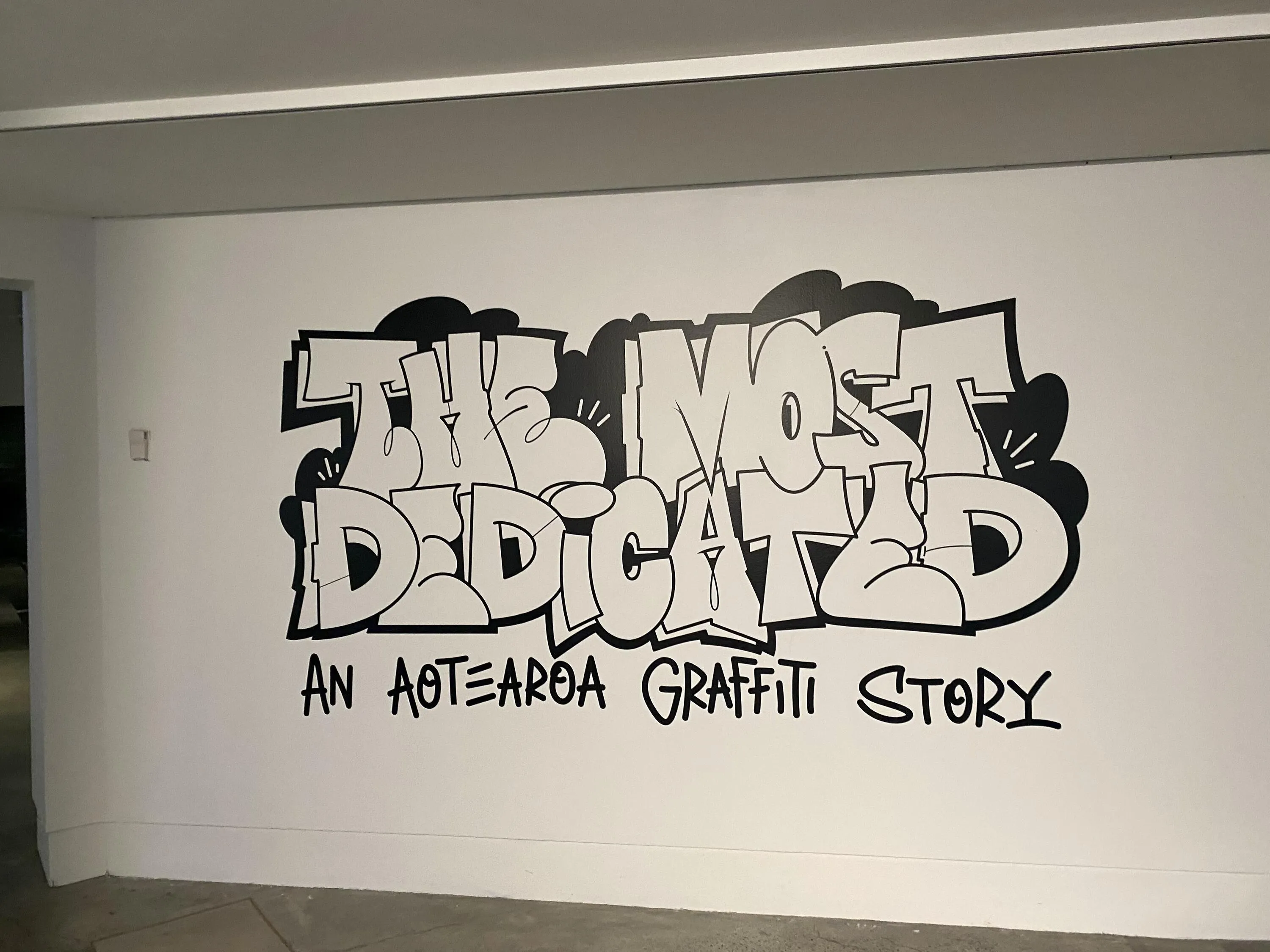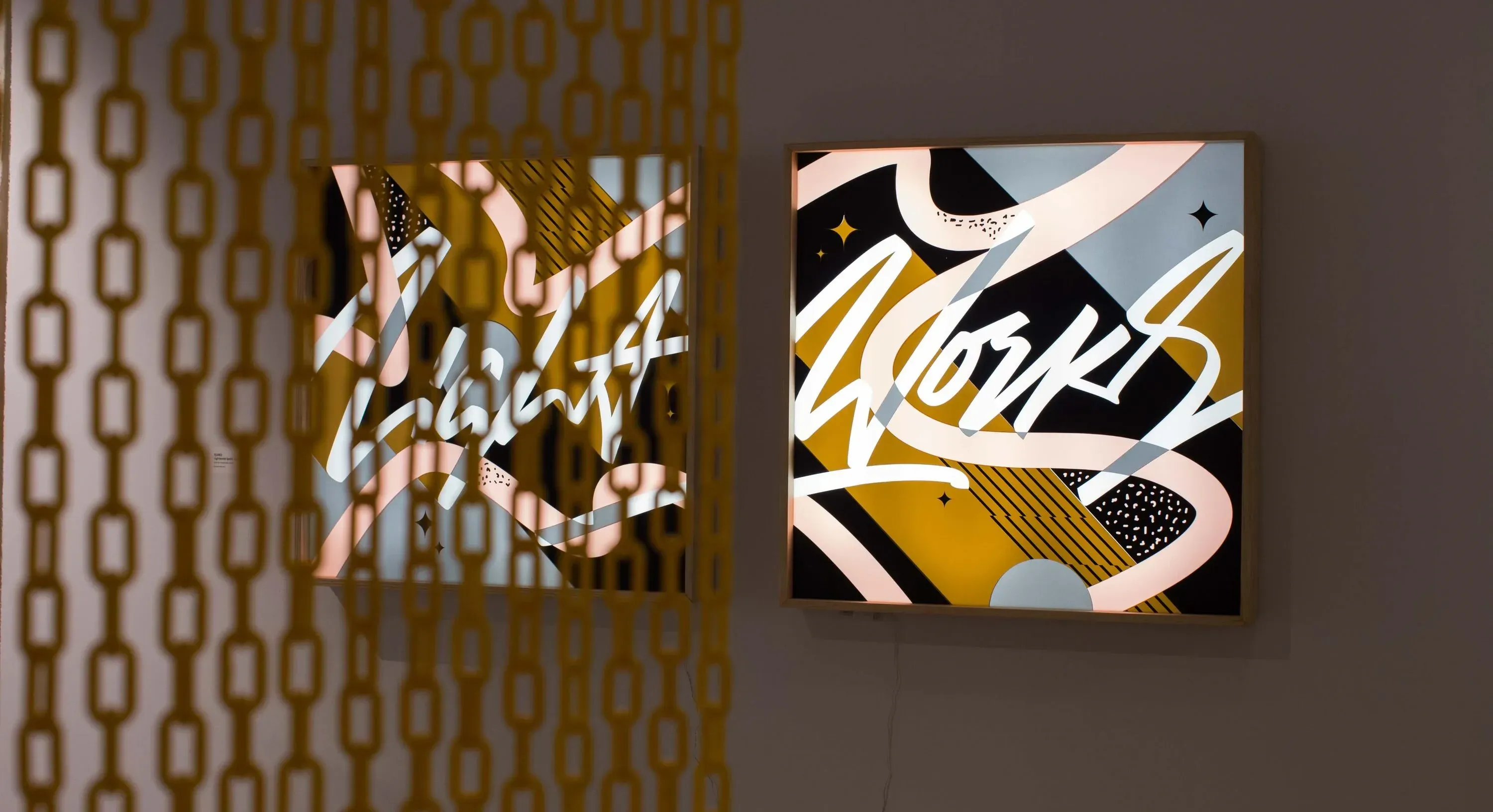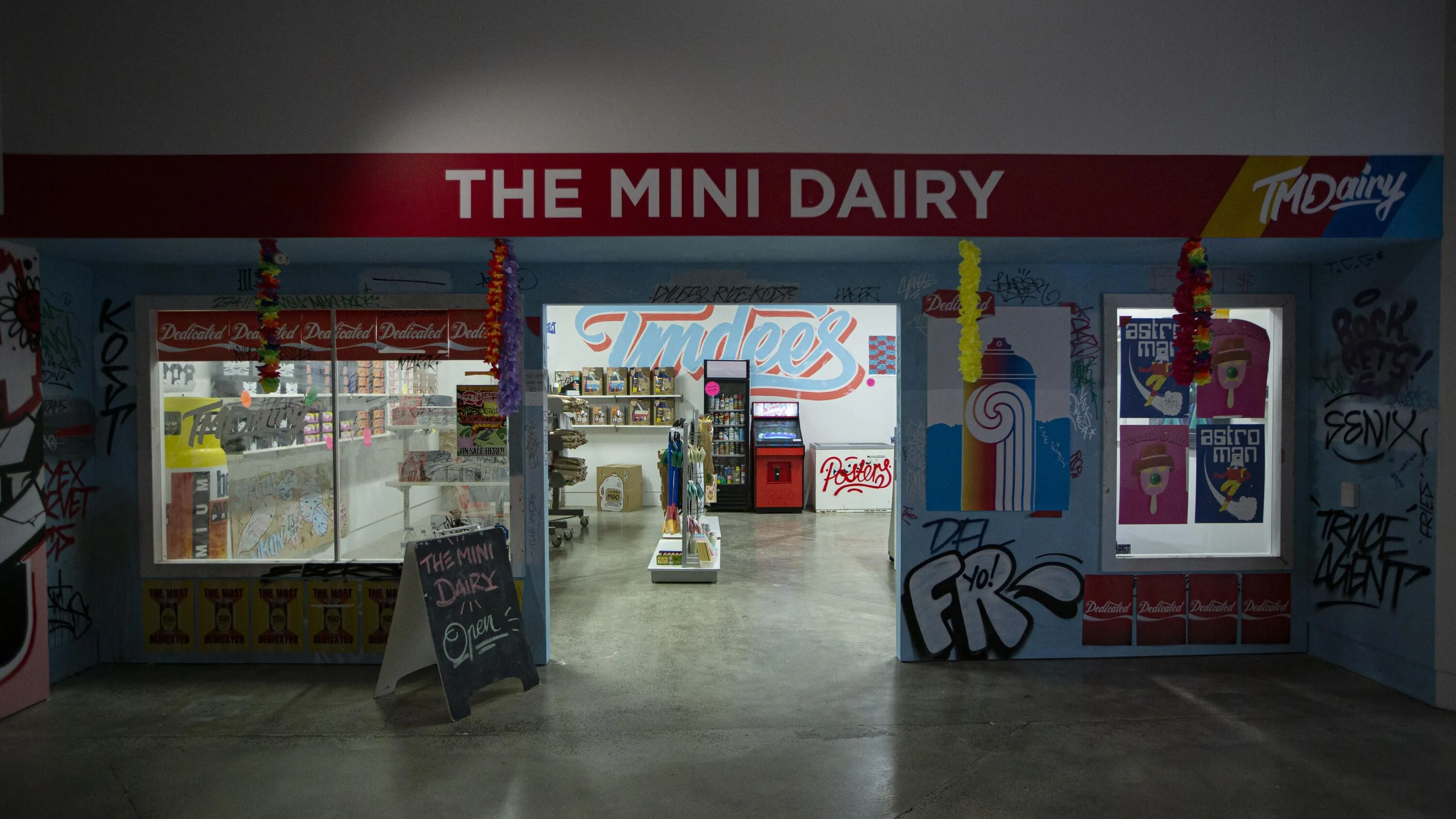But is it Art?
Written by
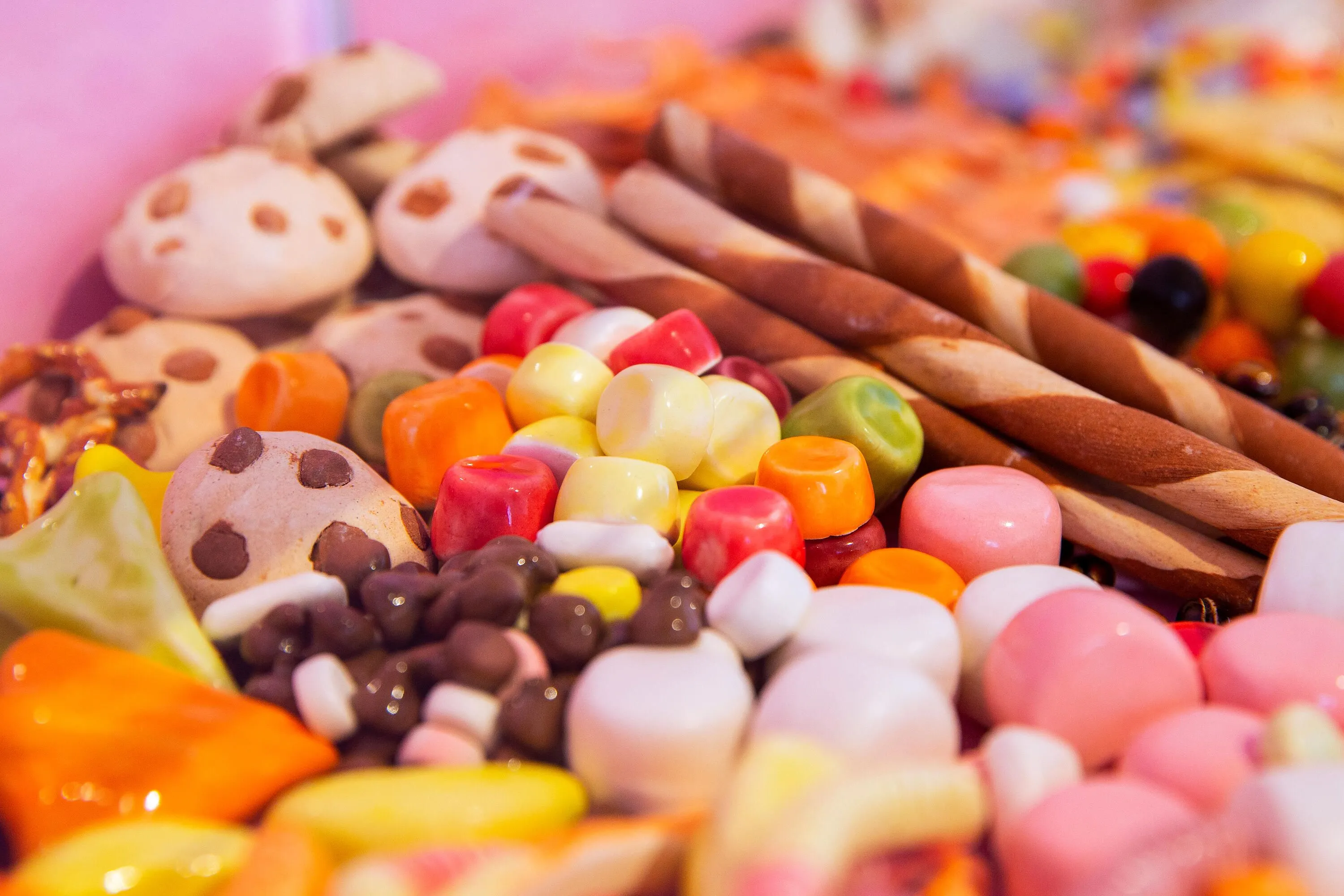
How long are you meant to look at art for?
To stay or not to stay, that is the question. Nobody really knows how long you’re “supposed” to look at art. How long is the ‘right’ amount of time to look and stand in front of a painting, and when are you meant to move on?
The Autumn 2021 Season at The Dowse Art Museum screams ‘as long as you want.’
Celebrating 50 years of art in the heart of Te Awakairangi Lower Hutt, the newest additions are vibrant and fresh. Never have I been in a gallery where I’ve been so fizzing to check out the exhibits, I had to refrain myself from running to check them out.
When the sugar high wears off
Candy Coated is a pick ‘n’ mix of artworks by international and Aotearoa-based artists who play with a sugary sweet aesthetic to explore dark and unsettling things that lurk beneath that candy-coated surface.
Upon entry, you’re greeted by a glass cabinet of ceramic treats. Based on snippets of overheard conversations, I know I’m not the only one who is tempted to open it and see if they’re real.
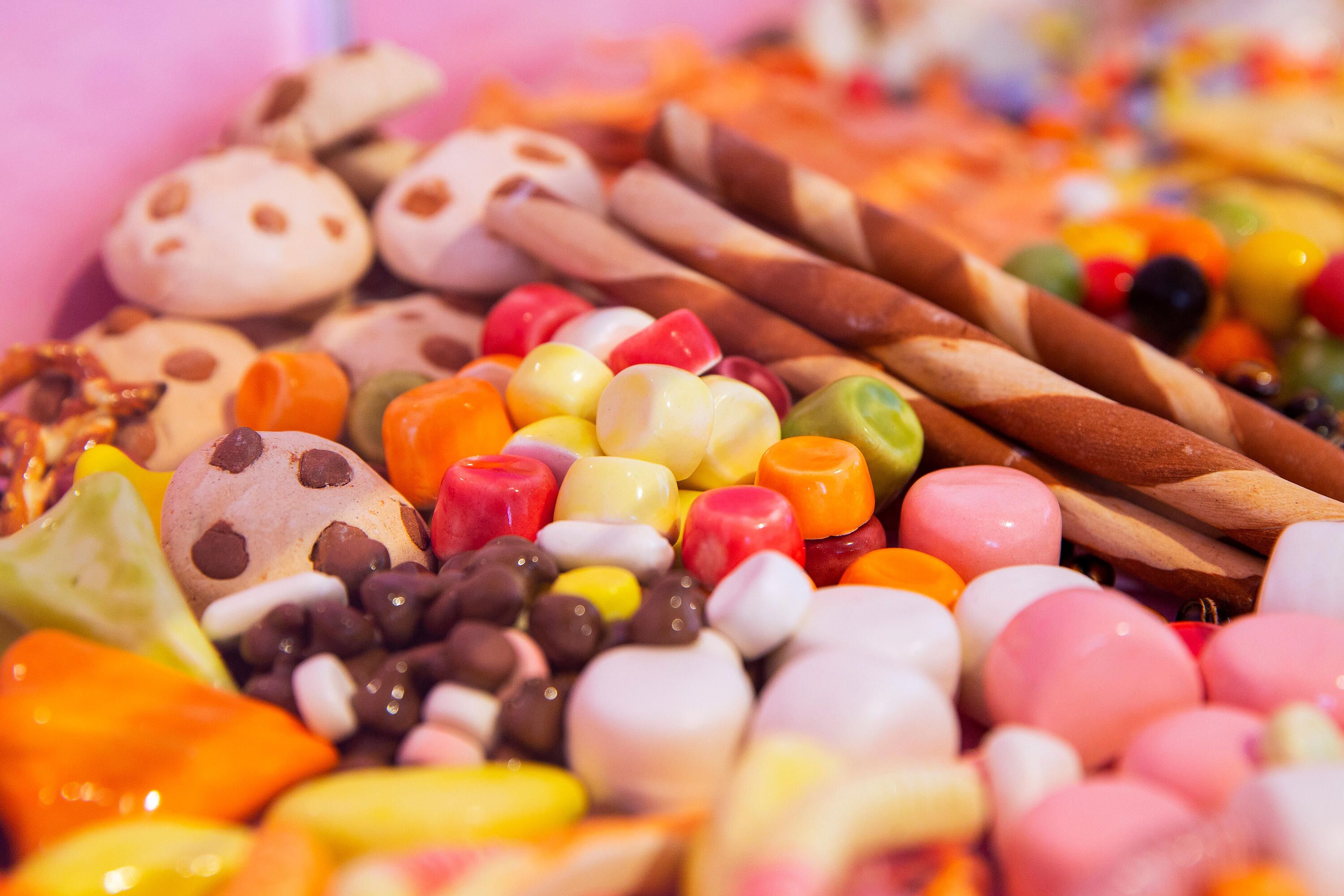
Elisa Barczak's work looks good enough to eat. Photo: Hagen Hopkins.
Then stretched out along a wall, is every sugar fiend’s worst nightmare - candy exploding out of their heads.
Titled Exploding Heads, Jon Noorlander’s (Sweden) work, is quoted as resembling a slick lolly commercial whose guts have turned inside out in a grotesque, yet oddly satisfying way. It’s fascinating and gross as, but you can’t stop watching the loop of explosions.
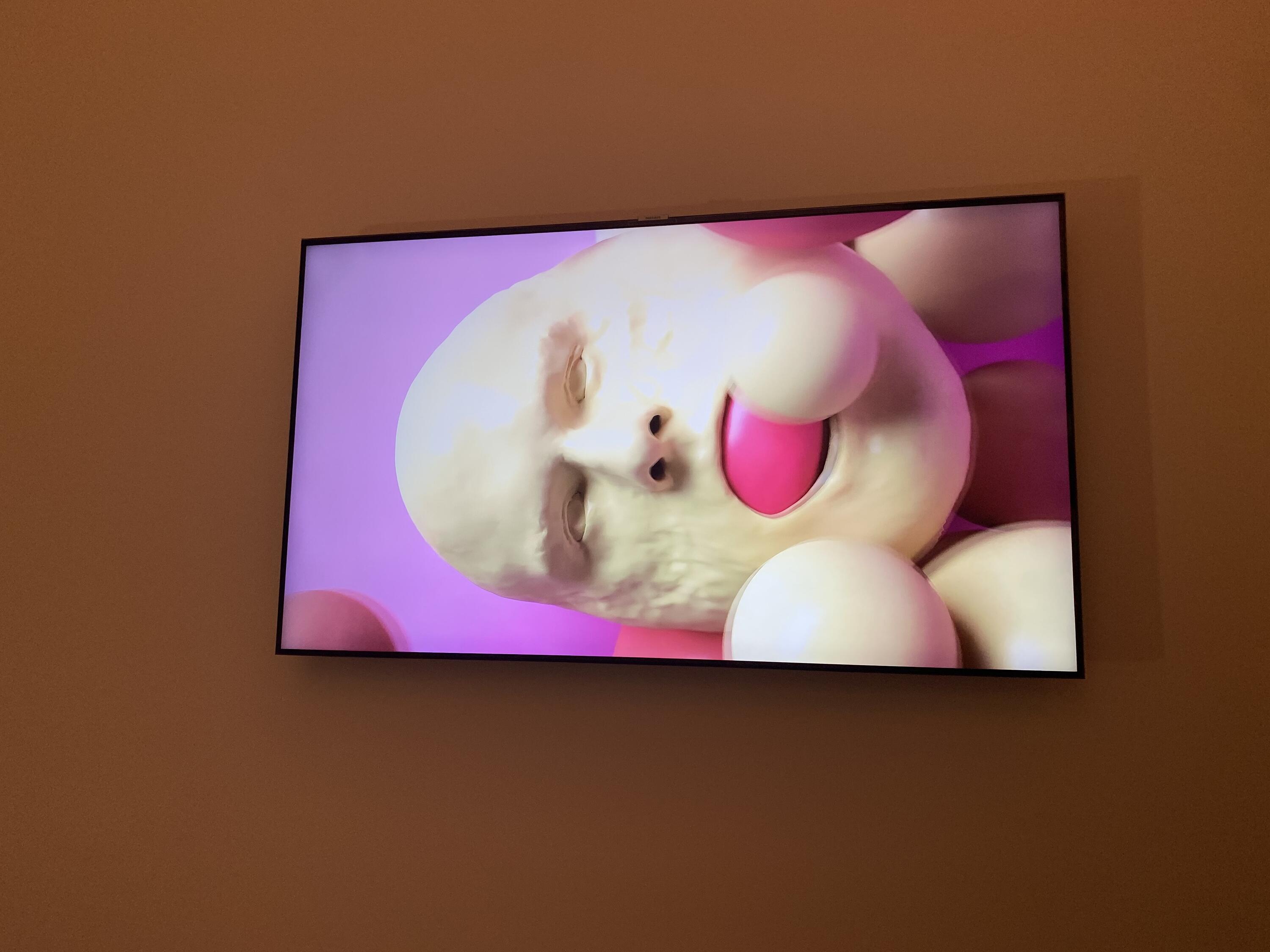
Exploding Heads, Jon Noorlander. Photo: Courtney Rose Brown.
A striking moment in the Candy Coated exhibit is the dual projection of sweets next to chaos. This offers a quiet moment of reflection as watching transfixed, you can’t help but notice how digestible sickly sweet commercials are next to natural and human-made disasters - something that we’re used to consuming and in a lot of cases without much thought. The composition and mirroring of both is truly remarkable.
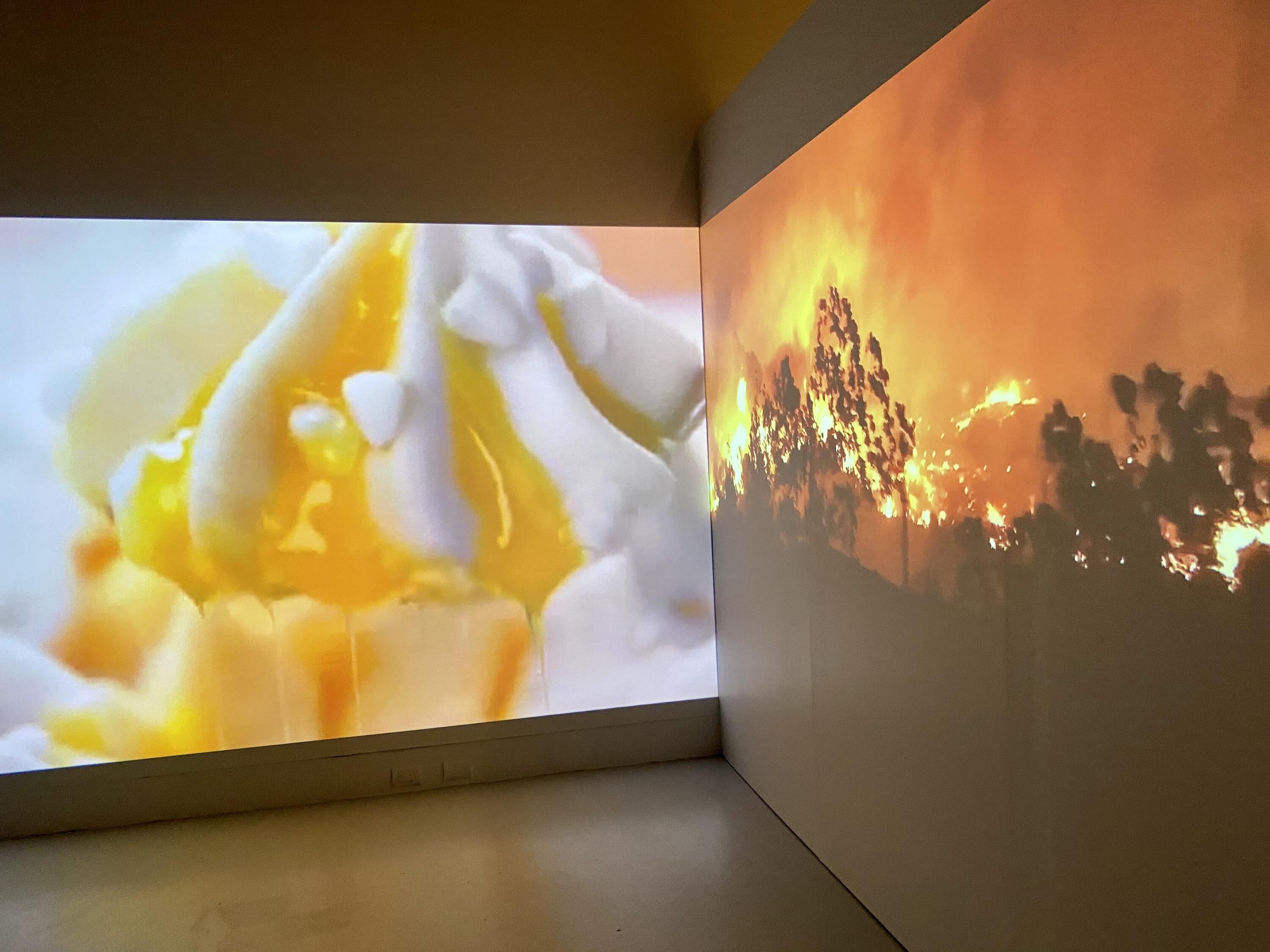
Alison Nguyen (US), Dessert-Disaster, 2017-18. Photo: Courtney Rose Brown.
A personal favourite is Emily Crook’s (Aotearoa) Plaything. On white walls, a soft pink heart is painted with a white frame in the centre. Crooks morphs ‘eye candy’ into something sweetly repulsive. Her models stroke and lick a mysterious fleshy substance - yet the nauseating quality of her images are camouflaged under opulent pink satin, sparkly jewellery and cutesy hearts. These would make great shirts, or anti-valentines day merch.
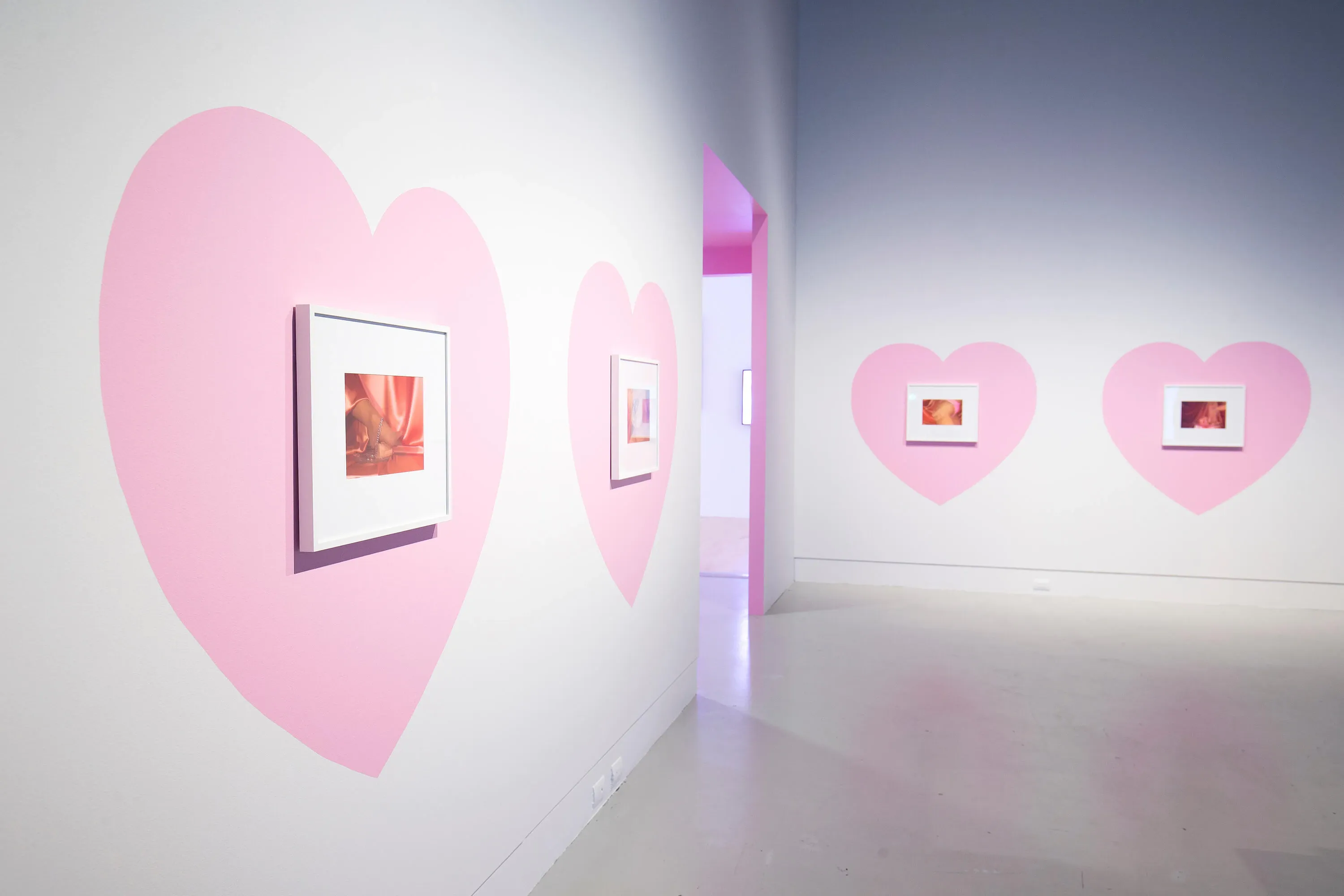
Scarlett Rose; Pamela Lixx, Angel fitz and Mitsi Loves From the series Plaything 2020. Photo: Hagen Hipkins.
Rachel Maclean’s (UK) film Feed Me, 2015, is projected in a room laced with velvet curtains. I enter without reading the sign outside, unprepared for what awaits me. It is captivating and disturbing, but for some reason, you can’t look away.
She holds you in with beauty explored in an ugly way. Described as a disturbing fairy tale where the sexualisation of girlhood feeds the corporate machine of happiness and success, the toxic positivity that is forced down people's throats with a spoonful of sugar and a handful of happy pills. I would recommend finding out the times in runs so you can see the full hour-long film.
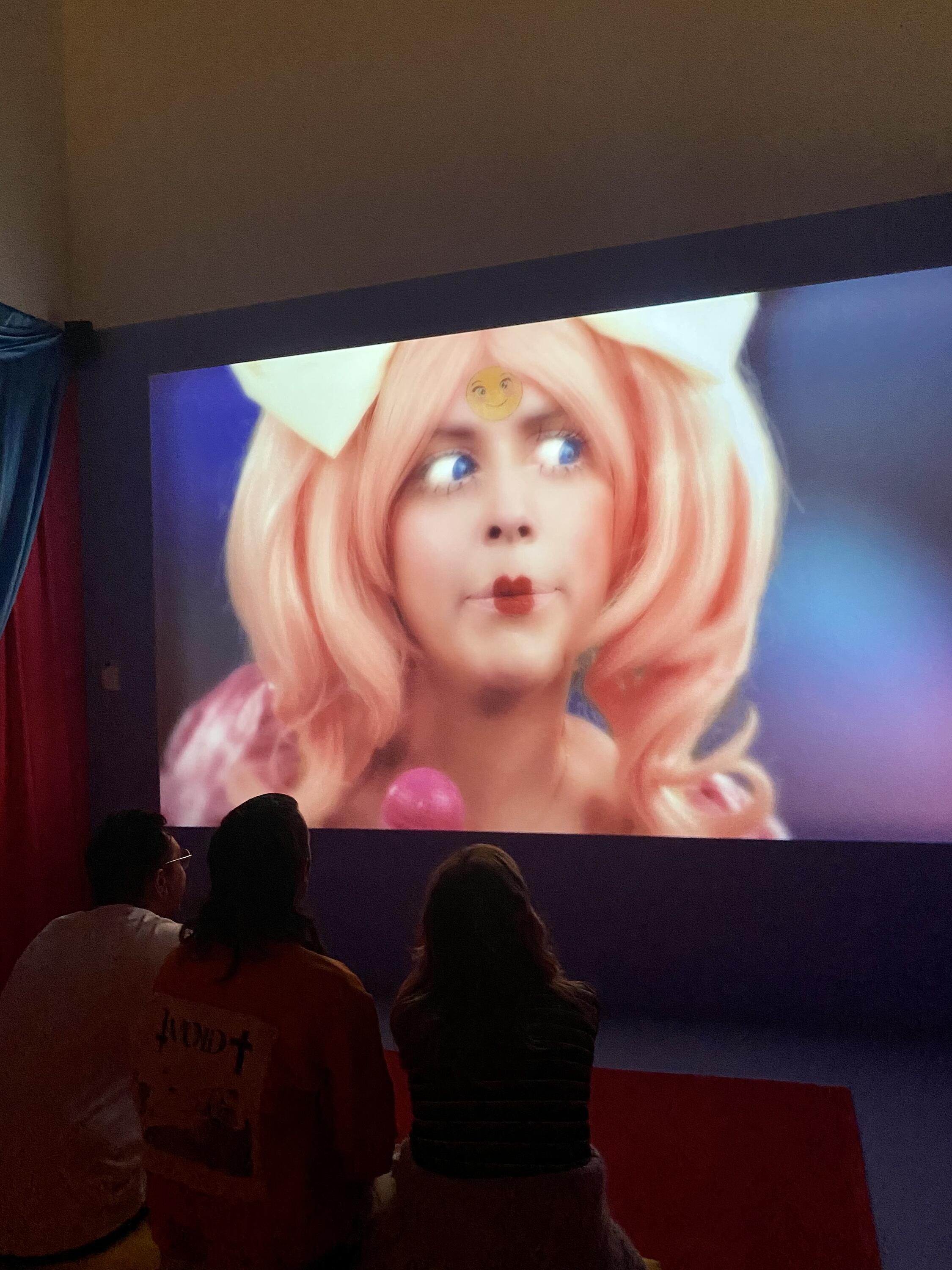
Rachel McLean, Feed Me. Photo: Courtney Rose Brown.
But is it art?
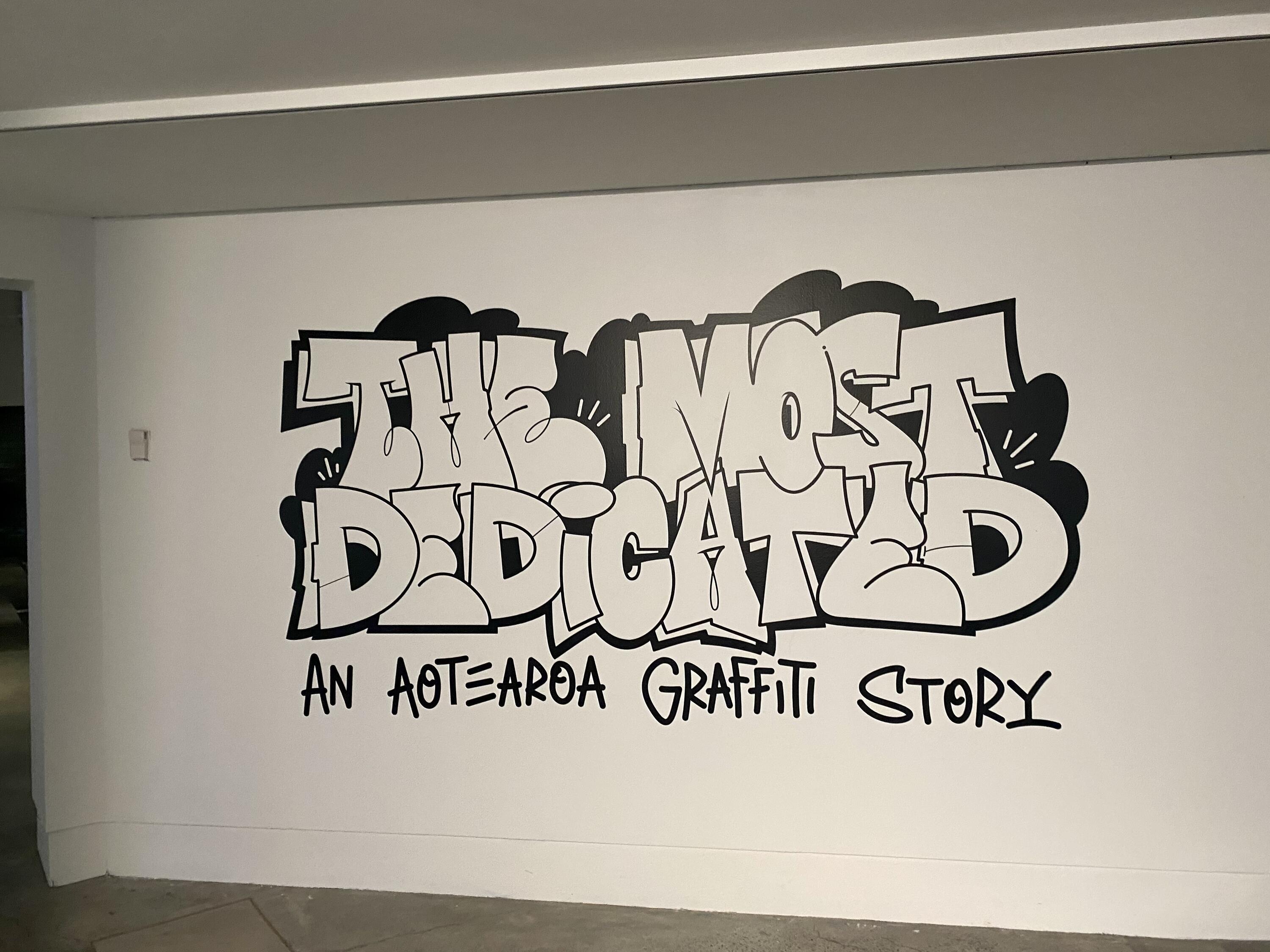
Photo: Courtney Rose Brown.
This is a frustrating question that those who deserve to showcase their work are often asked or are forced to ask themselves, when less considered works are thrown into the mainstream.
When Janine Williams (LADY DIVA) of TMD (The Most Dedicated) spoke about their collective work An Aotearoa Graffiti Story, she did so with trepidation. Below is an extract from her Instagram and her speech:
“Graffiti stirs a range of emotions within society, from nostalgia & identity to disgust & disbelief. It takes a brave institution & art director to take on the challenge of allowing a graffiti collective to tell their story & to share their experiences knowing what this entails...
“The show will upset many & bring joy & excitement to others. It shows the whole picture, the difficulties as young teens/adults in Aotearoa trying to find out who we were through the lens of an American culture, as we each tried to find the support possibly lacking & absent either at home or within institutions like traditional education & the arts that continued with the belief that it wasn’t art.
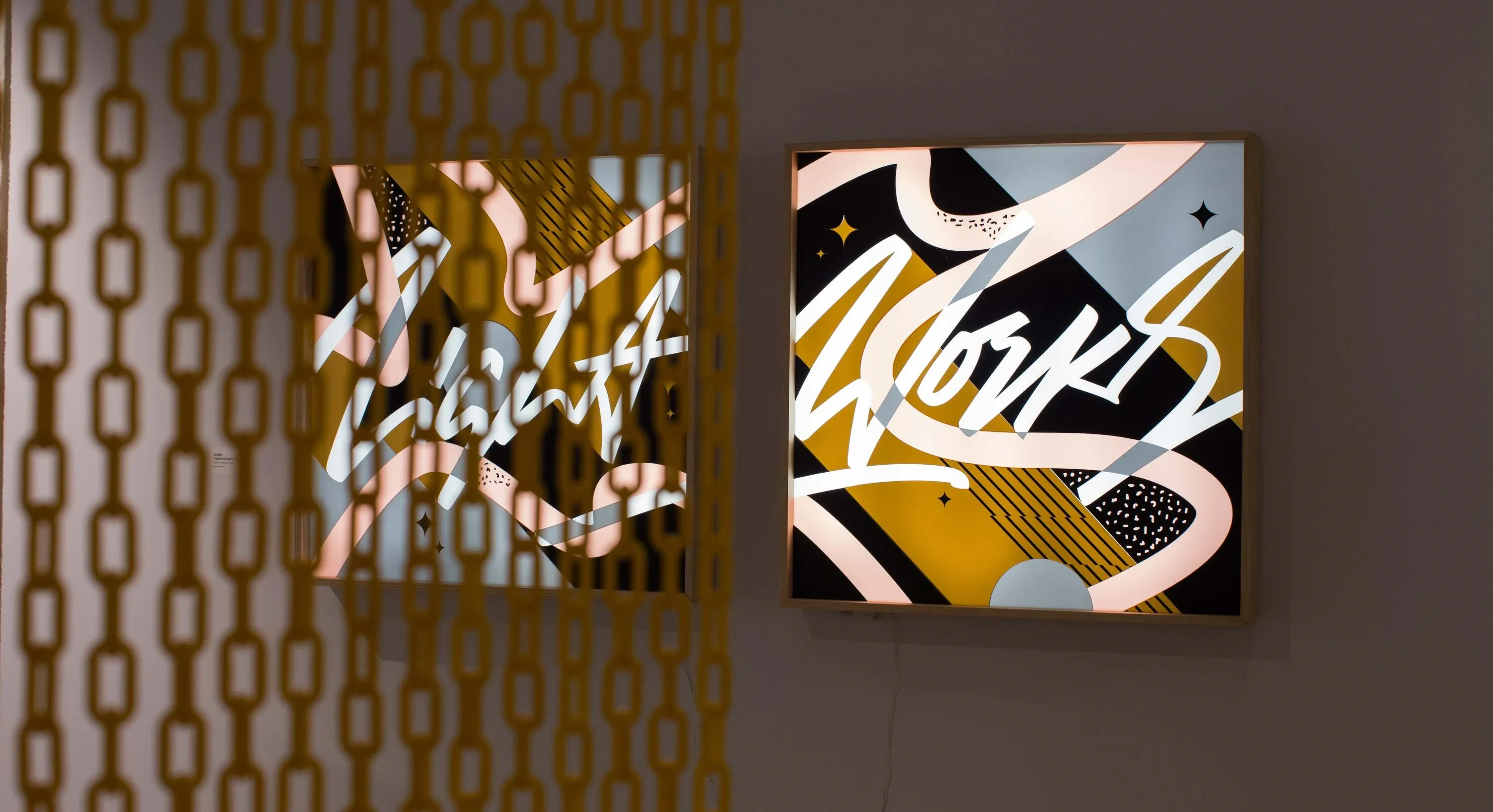
The Most Dedicated: An Aotearoa Graffiti Story, 2021. Photo: Antonio Hernandez.
“We were creative, we wanted to be seen, we didn’t have a degree, we didn’t have tuition fees for prestigious schools. We gathered on the street, it was our canvas. It wasn’t always right but it most definitely was a family that we all needed.
From the walls of South Auckland dairies to modern gallery walls & everything in between. This is about vulnerability & honesty & will be up for a few months if you are interested in seeing what we’ve had to work through over the past 20-30years.”
Founded in 1997, TMD Crew is a world-renowned artist collective with origins in graffiti. The exhibit allows you to delve into the evolution of Aotearoa’s foremost group of street artists.
This immersive and interactive experience explores the crew’s history from their humble beginnings of recreational graffiti. TMD Crew has over 20 artists each bringing their unique perspective to topics including cultural, social identity, environment, lettering and much more.
Reflection of community
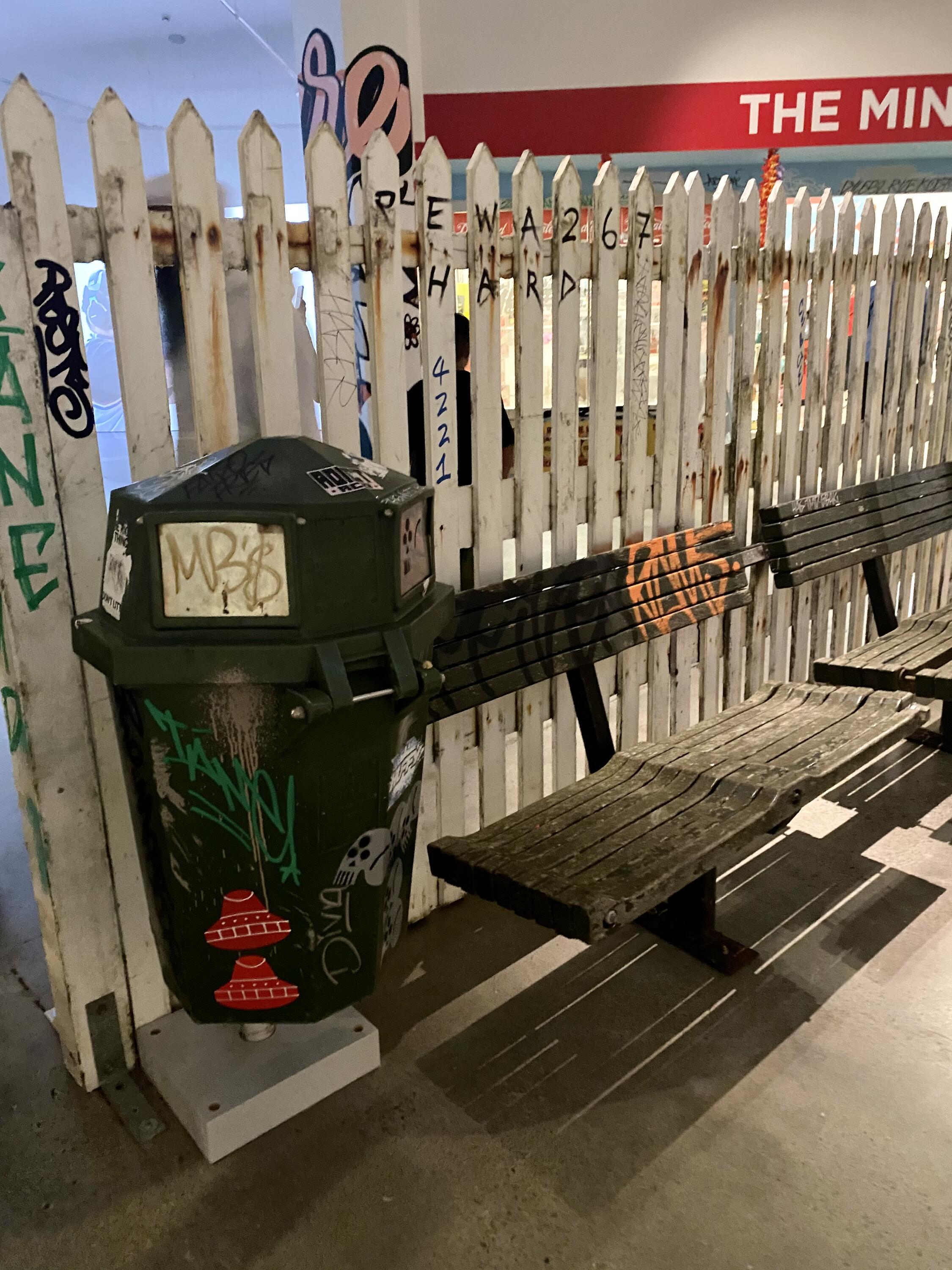
Direct from the streets. Photo: Courtney Rose Brown.
Stepping into An Aotearoa Graffiti Story, I feel at ease, comfortable. I’ve never seen the outside world reflected inside like this before. I think that’s why often in galleries or museums it’s hard to know how long to look at something - because it doesn’t necessarily tie into our lives or our histories.
I was born and raised in Pomare and Naenae and man, did my heart catch and see the streets I grew up in reflected back at me. The tagged green bin, the old park bench covered in an ugly green paint that’s faded and chipped, repainted with tags, and a dirty white picket fence, that’s not left out by spray paint.
They’ve built a 90s mini dairy covered in graffiti - inside is an arcade game, which of course is out of order, and a fridge stacked full of spray paint.
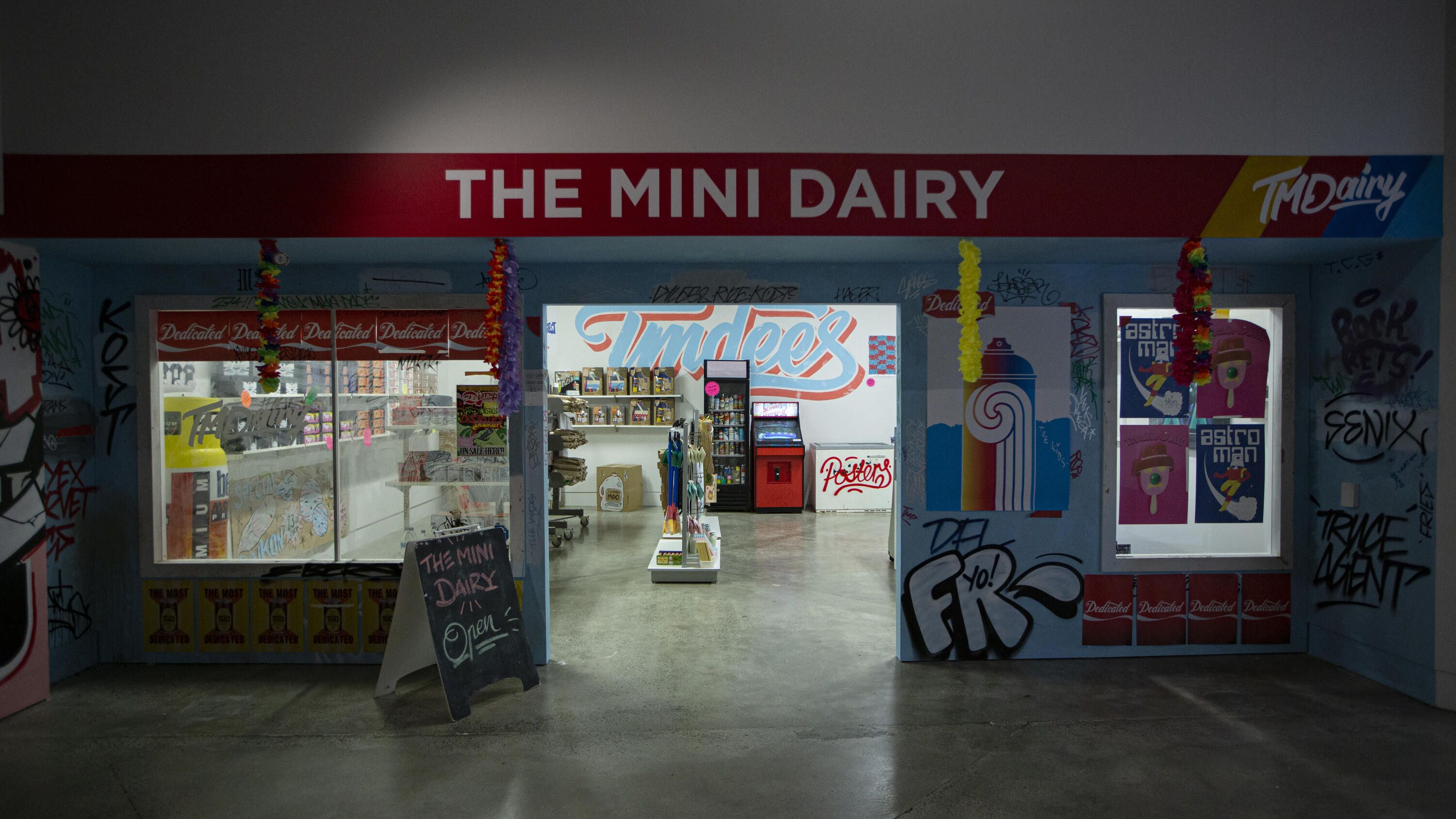
Photo: Antonio Hernandez.
A replica of Auckland’s “Maxx” train lies across the dairy. Tying back to the roots of the graffiti movement beginning on the New York City subway trains, a tradition that still continues today.
Graffiti was something only encouraged in our art classroom, and I only thought it was due to our art teacher trying to connect with her students. We see graffiti every day but it’s not often tied to ‘art’.
If it is, it’s called a mural.
There is skill and history in the work created in found objects.
The ‘Living large’ space they say is typical to homes where some of the crew once lived. It’s a barely furnished lounge/kitchen area with a couch, an old box TV, and a PC.
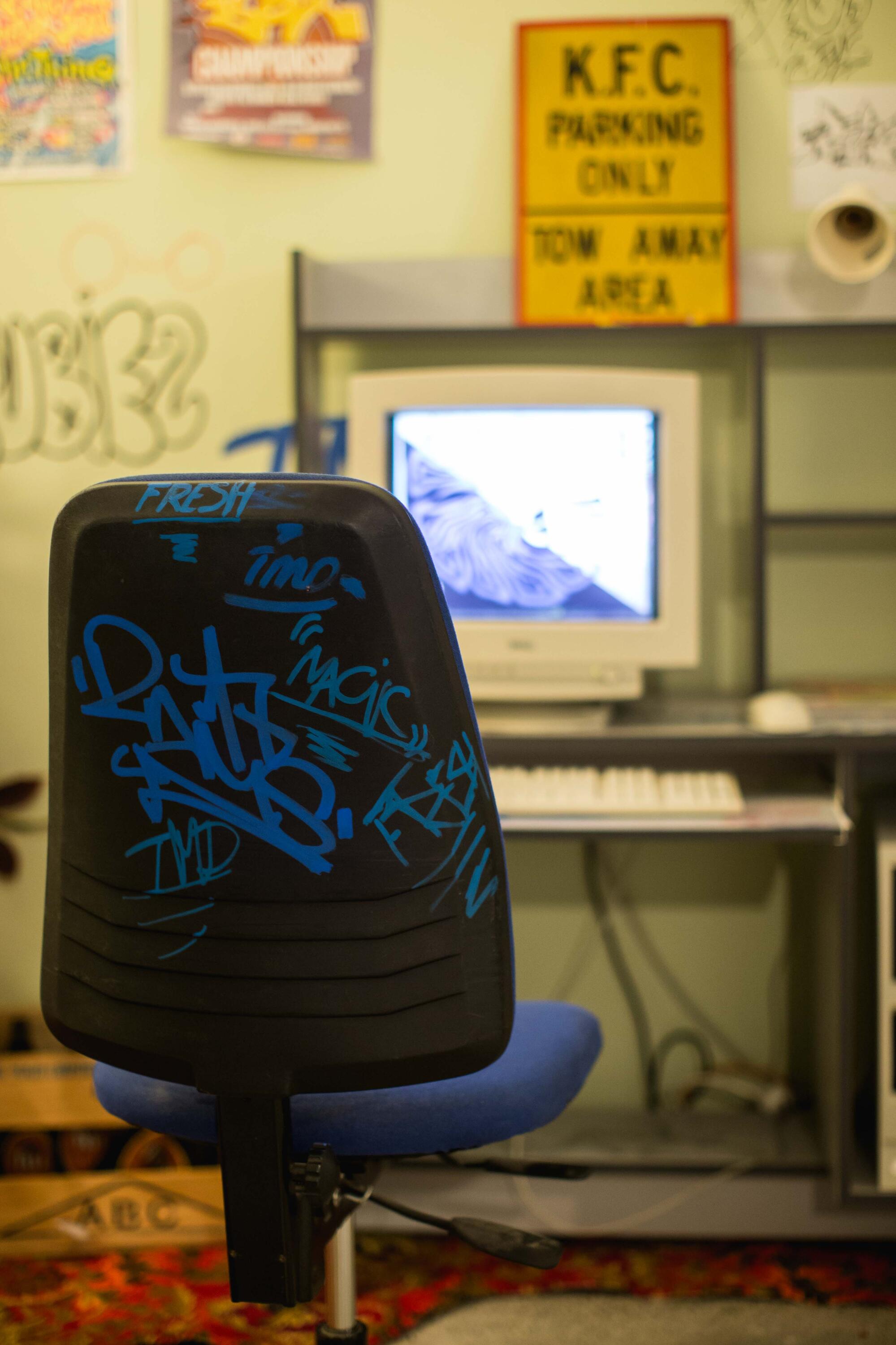
TMD's Living Large space. Photo: Antonio Hernandez.
It is a time capsule of where they first began. Using old dialup to Google graffiti to get inspired, and a space for sketching out ideas. There’s a table with loose paper and pens, where some children are testing out their own talents. On the coffee table are collections of photo albums with records of their work which you can flick through.
A cleverly titled ‘Photo-graffi’ shows a larger-than-life slideshow featuring images by Rimoni and OneDeap. Showcasing the artist, the work, their families, and their lives of the crew over the last twenty years.
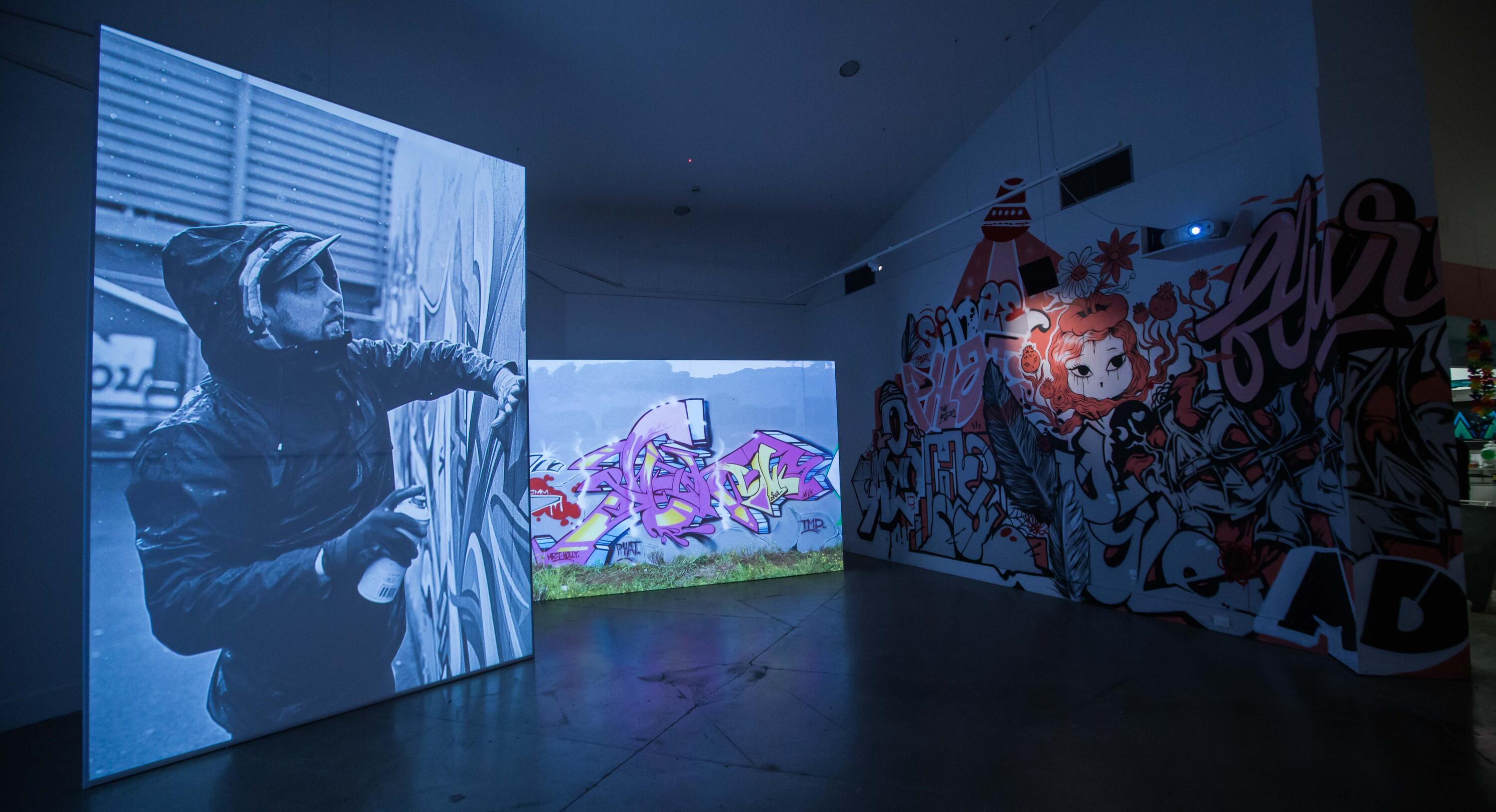
Photo: Antonio Hernandez.
In the back, they have ‘Post-Graffiti’ where it showcases the transition from the streets to a gallery space. Here they present an array of works from the collective and other mediums beyond the wall space.

